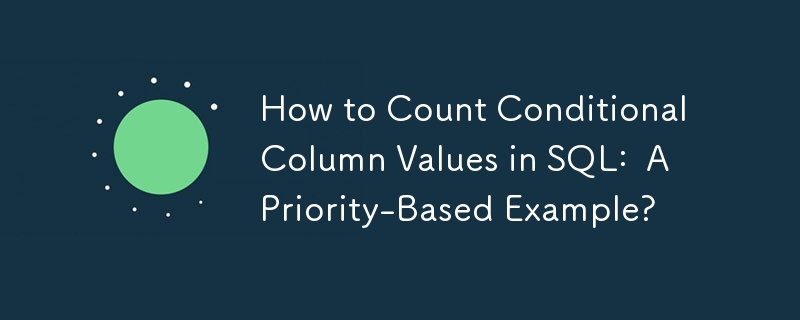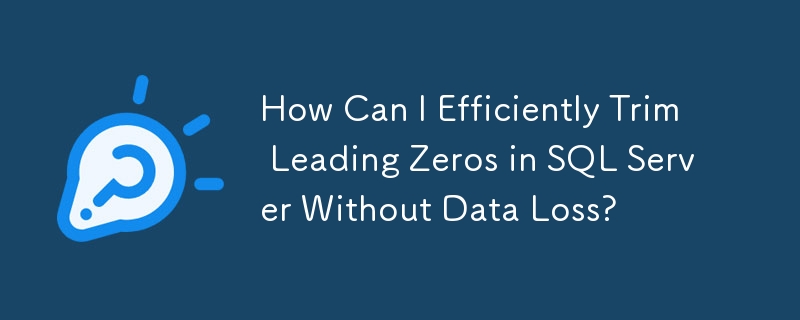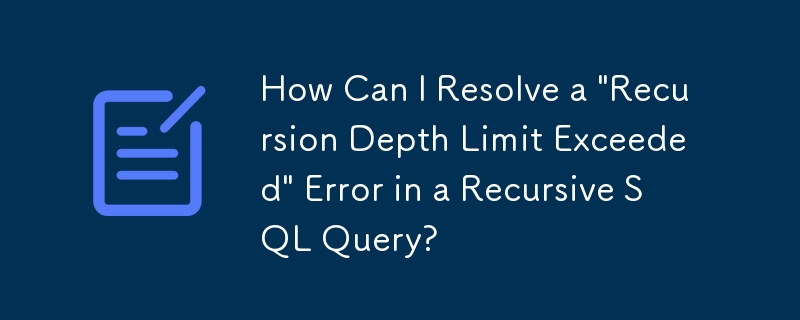Found a total of 10000 related content

Dynamic SQL: Building Flexible and Powerful Queries
Article Introduction:Dynamic SQL is a SQL statement dynamically built during the program operation process, which is used to implement flexible query logic. It splices SQL according to runtime conditions and is suitable for scenarios such as multi-condition query, dynamic sorting, batch operations, etc. When using it, SQL injection should be prevented through parameterized queries, whitelist verification, query constructor, etc. 1. Multi-condition query should determine whether the parameters exist and dynamically add WHERE conditions; 2. Dynamic sorting requires verification of column names and restricting paging parameters; 3. Batch operations should control the length of the parameter and use transactions. In addition, loop splicing, generating complex statements should be avoided, and execution plans should be checked using EXPLAIN to optimize performance. Rational use of dynamic SQL can improve flexibility, but it requires both security and efficiency.
2025-07-28
comment 0
617

python pandas filter rows example
Article Introduction:Single-condition filtering can be implemented using boolean index, such as df[df['score']>80] filtering rows with scores greater than 80; 2. Multi-condition filtering requires connections of & (and) and | (or) and enclosing each condition in parentheses, such as (df['age']>22)&(df['score']>85), or isin() to match enumeration values; 3. Fuzzy string matching can be implemented through str.contains(), such as df[df['name'].str.contains('a',case=False)] filtering rows with names containing 'a'; 4. The query() method provides a more concise syntax and supports expressions
2025-07-31
comment 0
184

mysql if statement in select
Article Introduction:In MySQL query, IF statements can be used to return different values in SELECT according to the conditions, which are suitable for data judgment, classification or formatted output. IF(condition,value_if_true,value_if_false) is its basic structure; for example, IF(status=1,'completed','not completed') converts numbers into intuitive tags; it can be used in combination with other fields, such as IF(amount>1000,'large order','ordinary order') to classify orders; support nesting to achieve multi-condition judgments, such as IF(score>=90,'A',IF(score>=80,'B','C')); compared to CAS
2025-07-18
comment 0
867

5 jQuery Touch Swipe Image Gallery Plugins
Article Introduction:Five super cool jQuery touch sliding picture library plug-ins are recommended to help you display your products or portfolios in a wonderful way! Users can swipe up and down, left and right to switch pictures, which is worth a try! Related articles:
30 Best Free Android Media Players
Add jQuery drag/touch support for iPad
Hammer.js touch carousel diagram
A JavaScript library for multi-touch gestures.
Source code demonstration 2. TouchSwipe
TouchSwipe is a jQuery plug-in that can be used with jQuery on touch devices such as iPad and iPhone.
Source code demonstration 3. TouchWipe
Allows you to use iPhone, iPad or i
2025-02-23
comment 0
1021

CSS container queries explained
Article Introduction:Container query solves the context dependency problem of traditional media queries by letting components respond according to the parent container size rather than the viewport size. 1. First, use container-type or container-name to define the query container, 2. Then use @container to write conditional styles instead of @media, so that components are adaptable in different layouts, supporting nested, multi-condition and named containers, suitable for grid, CMS and design systems. Modern browsers have good support, truly realizing component-level responsive design.
2025-07-25
comment 0
735

Advanced SQL Index Types: Clustered, Non-Clustered, Columnstore
Article Introduction:In database optimization, three index types: Clustered, Non-Clustered and Columnstore have applicable scenarios. 1. Clustered index determines the physical storage order of data, suitable for range query and sorting, but may cause performance problems when inserting and updating; 2. Non-clustered index supports multi-condition query, but requires two searches to affect I/O efficiency, and KeyLookup can be reduced through INCLUDE; 3. Column storage index is designed for big data analysis, with high compression rate and fast scanning, which is suitable for aggregate query, but the update support is limited. When used, it needs to be reasonably selected based on the query mode and data characteristics.
2025-07-25
comment 0
226

Advanced Spring Data JPA for Java Developers
Article Introduction:The core of mastering Advanced SpringDataJPA is to select the appropriate data access method based on the scenario and ensure performance and maintainability. 1. In custom query, @Query supports JPQL and native SQL, which is suitable for complex association and aggregation operations. It is recommended to use DTO or interface projection to perform type-safe mapping to avoid maintenance problems caused by using Object[]. 2. The paging operation needs to be implemented in combination with Pageable, but beware of N 1 query problems. You can preload the associated data through JOINFETCH or use projection to reduce entity loading, thereby improving performance. 3. For multi-condition dynamic queries, JpaSpecifica should be used
2025-07-31
comment 0
211

How to fix Chrome not respecting dark mode on a website
Article Introduction:When Chrome does not respect dark mode, it can check the system and browser settings in turn, use developer tools to troubleshoot media query problems, and force enabled through plug-ins or experimental functions. First, make sure that both the operating system and Chrome's dark mode are enabled correctly; secondly, use the developer tools to check whether prefers-color-scheme:dark is effective; if it is still invalid, you can try the DarkReader plug-in or enable Chrome's experimental forced dark mode function; website developers should use standard media queries, avoid hard-coded backgrounds, and test multi-device compatibility.
2025-07-15
comment 0
768

SQL Best Practices for High-Concurrency Environments
Article Introduction:The key to writing "smart" SQL in a high concurrency environment is to reduce lock contention and improve efficiency. 1. Use index reasonably, focus on WHERE and JOIN condition fields, avoid low-base numeric fields, pay attention to the order of combined indexes, and analyze slow query logs regularly; 2. Control transaction granularity, only include necessary operations, shorten lock holding time, avoid time-consuming tasks in transactions or waiting for input; 3. Avoid SELECT* and redundant JOINs, clearly list the required fields, connect only necessary tables, and reduce I/O burden; 4. Use batch operations instead of multiple single operations, such as multi-value insertion or multi-record updates, to reduce database pressure and improve throughput.
2025-08-01
comment 0
819

Detailed explanation of nested usage scenarios for CASE WHEN conditional judgment
Article Introduction:Nested CASEWHEN statements are used to handle complex SQL conditional branches. 1. It achieves multi-condition judgment through multi-layer nesting, similar to a tree-like structure, with the outer layer as a tree trunk and the inner layer as a tree branch. 2. In order to improve readability and maintainability, it is necessary to make good use of comments, standardize code formats, and consider using auxiliary tables or functions to simplify logic. 3. The key to avoiding traps is to avoid missing ELSE statements, carefully check the logic to avoid errors, and pay attention to optimizing performance to prevent excessive nesting from affecting query efficiency. Only by mastering these skills can you efficiently use nested CASEWHEN statements.
2025-04-08
comment 0
981

Creating clustered and non-clustered indexes in SQL.
Article Introduction:Clustered index determines the physical storage order of data, and each table can only have one; non-clustered indexes create independent structures, and there can be multiple ones. 1. Clustered indexes are suitable for columns with high uniqueness, frequent queries, and many range queries, such as primary keys or commonly used filtering condition fields, but will affect the insertion performance. 2. Non-clustered indexes are suitable for different query scenarios. Data rows are positioned through pointers and support multi-field composite indexes. The most commonly filtered fields should be placed in front of them, and overwrite indexes can be built to avoid back-to-table queries. 3. Creating indexes requires weighing read and write performance, avoiding excessive indexes that increase maintenance overhead and occupy additional space. The query mode should be analyzed in combination with the execution plan and designed reasonably to achieve the optimal effect.
2025-07-07
comment 0
247

SQL Query Optimization Tools Comparison
Article Introduction:The choice of SQL query optimization tool depends on the usage scenario. 1. Open source tools such as DBeaver and MySQLWorkbench are suitable for small and medium-sized projects. The former supports multi-database and interface-friendly, while the latter is specially designed for MySQL and has built-in visual analysis functions, but the two lack automation suggestions. 2. Commercial tools such as SolarWindsDPA and Datadog are suitable for enterprise environments. The former provides real-time monitoring and automatic indexing suggestions, while the latter supports full-stack monitoring and can locate system-level problems, but are at a high price. 3. Integrated solutions such as JetBrainsDataGrip plug-in and AzureDataStudio are suitable for use in the development stage. They can write and check to improve efficiency, but in-depth analysis
2025-07-29
comment 0
654

How to use media queries for responsive design
Article Introduction:Media query is the basic tool for responsive website design, enabling multi-device compatibility by switching styles based on device characteristics (such as screen width). Its basic syntax is @media media type and (condition){CSS rules}, for example, using @mediascreenand(max-width:767px) to adjust the style of the small screen. It is recommended to adopt a mobile priority strategy, first define the mobile phone style and then gradually adapt to a larger screen. Pay attention to when using: ① Select a general breakpoint instead of a specific device size; ② Set the viewport meta tag to ensure that the mobile terminal takes effect; ③ Avoid relying solely on browser zoom tests; ④ Only modify the styles that need to be adjusted in media queries. Mastering media queries helps build a responsive layout with clear structure and easy to maintain.
2025-06-30
comment 0
506
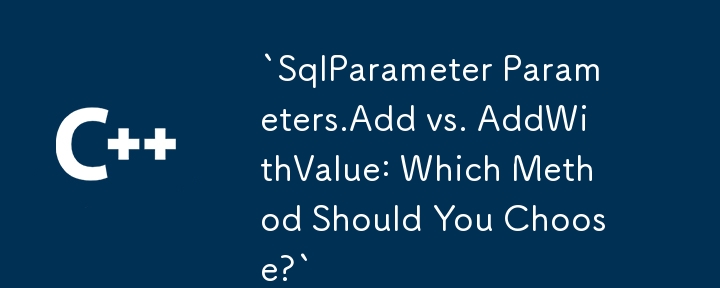

Dave The Diver: How To Catch Spider Crabs
Article Introduction:In Dave The Diver, there are some creatures that are not easy to catch. Or, catch alive that is. The spider crab is one of those very species, making it seem like the only way to bring these crustaceans back up to land is to viciously crack them up w
2025-01-10
comment 0
853
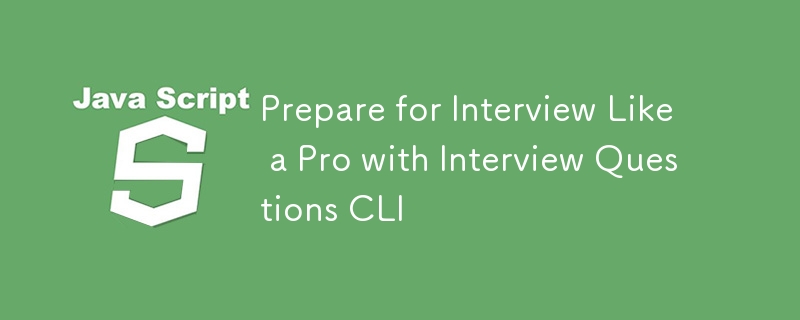
Prepare for Interview Like a Pro with Interview Questions CLI
Article Introduction:Prepare for Interview Like a Pro with Interview Questions CLI
What is the Interview Questions CLI?
The Interview Questions CLI is a command-line tool designed for JavaScript learners and developers who want to enhance their interview
2025-01-10
comment 0
1484















